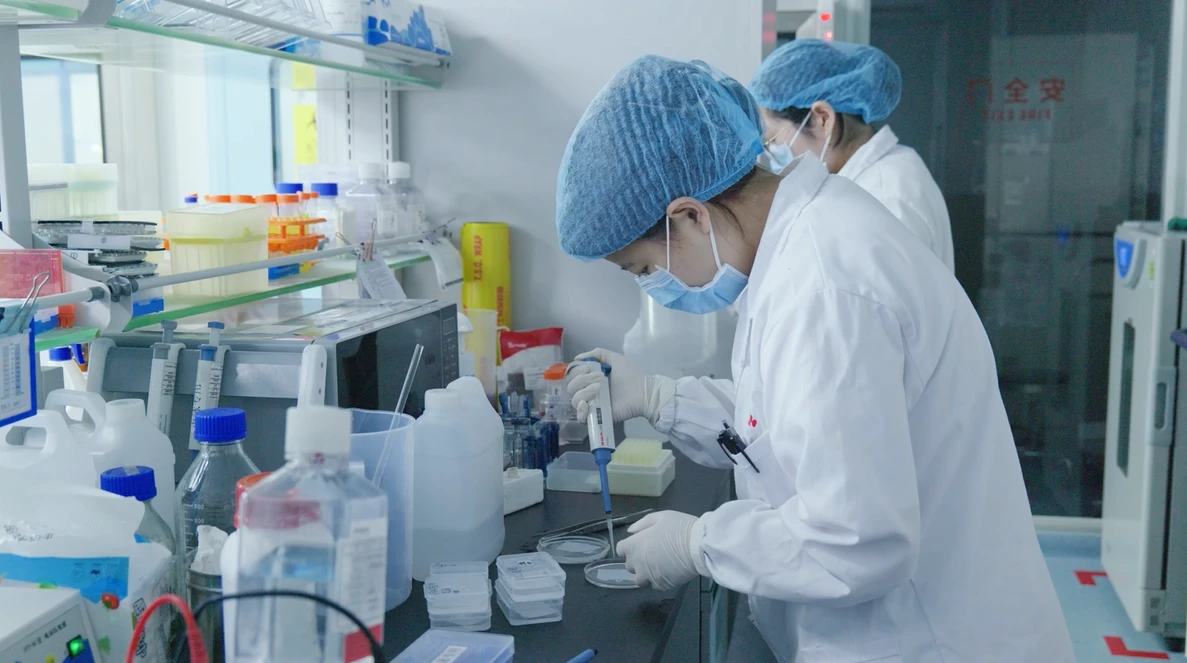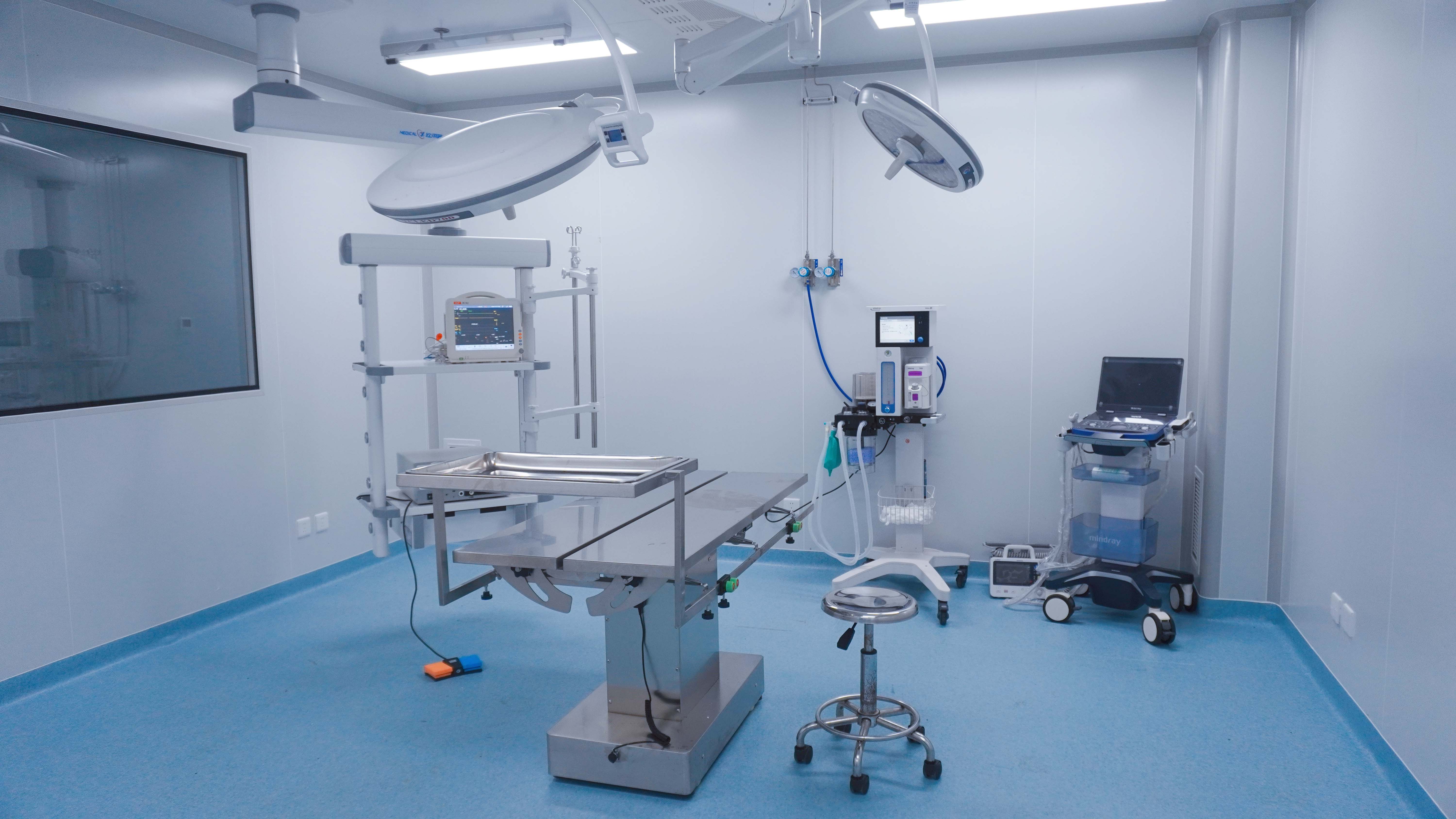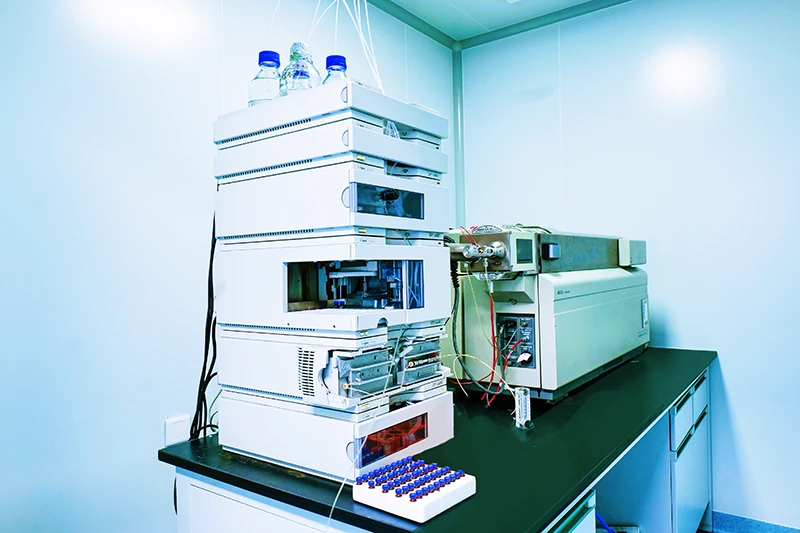Pigs serve as valuable biomedical resources beyond nutrition. Their anatomical, physiological, genetic, and metabolic similarities to humans, combined with low cost and rapid breeding, make them ideal for human disease modeling and xenotransplantation.
CRISPR/Cas9 technology enables efficient single-base editing, gene knockout, and knockin. Combined with somatic cell nuclear transfer, this allows precise generation of gene-edited pigs.
HuaTeng Biotechnology maintains a specialized large-animal gene editing platform, utilizing CRISPR/Cas9, TALEN, and ZFN technologies for precision porcie disease model development.
|
Disease Model |
Target Gene |
Phenotypic Features |
References |
|
Albinism |
TYR knockout |
Typical albinism phenotype, white skin/fur |
[1] |
|
Alzheimer's Disease |
Human APP695sw insertion |
High APP695sw expression in pig brains |
[2] |
|
Human PSEN1M146I insertion |
Transgenic protein expression across tissues |
[3] |
|
|
Human APP695sw + PSEN1M146I insertion |
Promotes intraneuronal Aβ deposition |
[4] |
|
|
Human hAPP, hTau, hPS1 insertion |
High transgenic protein expression in brain tissue |
[5] |
|
|
Amyotrophic Lateral Sclerosis |
Human SOD-1-G93A insertion |
Hindlimb motor deficits, motor neuron degeneration |
[6] |
|
Ataxia Telangiectasia |
ATM knockout |
Early cerebellar damage, Purkinje cell loss and altered cellular structure |
[7] |
|
Breast Cancer |
BRCA1 knockout |
Piglet death at 18 days |
[8] |
|
Arrhythmia |
SCN5A-E558X |
Conduction slowing, increased ventricular arrhythmia susceptibility |
[9] |
|
Cardiovascular Disease |
LDLR knockout |
Hypercholesterolemia, atherosclerosis lesions |
[10] |
|
Type II Collagenopathy |
COL2A knockout |
Severe skeletal dysplasia, shortened long bones, cleft palate, depressed nasal bridge, vertebral abnormalities, tracheal collapse |
[11] |
|
Colorectal Cancer |
APC1311 |
Abnormal crypt foci, low/high-grade dysplastic adenomas |
[12] |
|
Cone-Rod Dystrophy |
Human GUCY2D dominant insertion |
Visual dysfunction, retinal morphological abnormalities |
[13] |
|
Cystic Fibrosis |
CFTR knockout |
Chloride transport defects, meconium ileus, exocrine pancreatic destruction, focal biliary cirrhosis. Severe malformations in intestine, respiratory tract, pancreas, liver, gallbladder and male reproductive tract |
[14,15,16] |
|
Diabetes |
INS-C96Y knockin |
Reduced insulin secretory granules, dilated ER, cataract development |
[17] |
|
Duchenne Muscular Dystrophy |
DMD exon 52 knockout |
Undetectable dystrophin in skeletal muscle, increased serum creatine kinase, progressive dystrophic changes in skeletal muscle, impaired mobility, muscle weakness, maximum lifespan 3 months |
[18] |
|
Huntington's Disease |
HTT knockin 150 CAG |
Striatal spiny neuron degeneration, motor abnormalities, behavioral abnormalities, early death |
[19] |
|
Hypertrophic Cardiomyopathy |
MYH7R723G knockin |
Mild cardiomyocyte disarray, nuclear abnormalities, MYH7 overexpression; death within 24 hours of birth |
[20] |
|
Immunodeficient Pigs |
IL2RG knockout |
Thymic disease with impaired immunoglobulin and T/NK cell production |
[21] |
|
IL2RG knockout |
Thymic disease with impaired T/NK cell production |
[22] |
|
|
RAG2 knockout |
Impaired B/T cells, failure to thrive |
[23] |
|
|
RAG1 + RAG2 double knockout |
Immunorgan dysplasia, V(D)J rearrangement failure, loss of mature B/T cells |
[24] |
|
|
IL2RG + ART double knockout |
Absence of T/B/NK cells in peripheral blood and lymphoid tissues |
[25] |
|
|
PERV Inactivation |
POL knockout |
62 POL copies inactivated in pig cells, 1000-fold reduction in PERV transmission to human cells. 100% PERV mRNA inactivation in piglets |
[26,27] |
|
Lung Cancer |
TP53, PTEN, APC, BRCA1, BRCA2 knockout |
Piglets develop lung tumors |
[28] |
|
Neurofibromatosis Type I |
NF1R1947 |
Piglets with café-au-lait macules, cutaneous neurofibromas, and optic pathway gliomas |
[29] |
|
Tumor Model |
KRASG12D + TP53R167H |
Development of mesenchymal-derived tumors: soft tissue sarcomas, pancreatic cancer, hepatocellular carcinoma |
[30] |
|
Osteosarcoma |
TP53R167H + KRASG12D |
Multiple large osteosarcomas in long bones and skull |
[31] |
|
Parkinson's Disease |
DJ-1 knockout |
DJ-1 protein expression disrupted; piglet death within 2 days of birth |
[32] |
|
Retinitis Pigmentosa |
Human RHOP23H insertion |
Abnormal full-field electroretinogram in dark/light conditions |
[33] |
|
Spinal Muscular Atrophy |
SMN1 silencing |
Loss of motor neurons/axons, proximal weakness, EMG fibrillations, reduced CMAP |
[34] |
|
Macular Dystrophy |
Human ELOVL4-Y270terEYFP insertion |
ERG shows photoreceptor loss, disorganized inner/outer segments, attenuated responses |
[35] |
[1] X. Zhou, J. Xin, N. Fan, et al. Generation of CRISPR/Cas9-mediated gene-targeted pigs via somatic cell nuclear transfer. Cell. Mol. Life Sci. 72, 1175–1184 (2015).
[2] P. M. Kragh, A. L. Nielsen, et al. Hemizygous minipigs produced by random gene insertion and handmade cloning express the Alzheimer’s disease-causing dominant mutation APPsw. Transgenic Res. 18, 545–558 (2009).
[3] J. E. Jakobsen, M. G. Johansen, et al. Generation of minipigs with targeted transgene insertion by recombinase-mediated cassette exchange (RMCE) and somatic cell nuclear transfer (SCNT). Transgenic Res. 22, 709–723 (2013).
[4] J. E. Jakobsen, M. G. Johansen, et al. Expression of the Alzheimer’s disease mutations AbPP695sw and PSEN1M146I in double-transgenic göttingen minipigs. J. Alzheimers Dis. 53, 1617–1630 (2016).
[5] S.-E. Lee, H. Hyun, et al. Production of transgenic pig as an Alzheimer’s disease model using a multi-cistronic vector system. PLOS ONE 12, e0177933 (2017).
[6] H. Yang, G. Wang, H. et al. Species-dependent neuropathology in transgenic SOD1 pigs. Cell Res. 24, 464–481 (2014).
[7] R. Beraldi, C.-H. Chan, et al. A novel porcine model of ataxia telangiectasia reproduces neurological features and motor deficits of human disease. Human Molec. Genet. 24, 6473–6484 (2015).
[8] Y. Luo, J. Li, Y. Liu, et al. High efficiency of BRCA1 knockout using rAAV-mediated gene targeting: Developing a pig model for breast cancer. Transgenic Res. 20, 975–988 (2011).
[9] D. S. Park, M. Cerrone, G. et al. Genetically engineered SCN5A mutant pig hearts exhibit conduction defects and arrhythmias. J. Clin. Invest. 125, 403–412 (2015).
[10] B. T. Davis, X. J. Wang, et al. Targeted disruption of LDLR causes hypercholesterolemia and atherosclerosis in Yucatan miniature pigs. PLOS ONE 9, e93457 (2014).
[11] B. Zhang, C. Wang, Y. et al. CRISPR-engineered swine model of COL2A1 deficiency recapitulates altered early skeletal developmental defects in humans. Bone 137, 115450 (2020).
[12] T. Flisikowska, C. Merkl, et al. A porcine model of familial adenomatous polyposis. Gastroenterology 143, 1173–1175.e7 (2012).
[13] C. Kostic, S. G. Lillico, et al. Rapid cohort generation and analysis of disease spectrum of large animal model of cone dystrophy. PLOS ONE 8, e71363 (2013).
[14] C. S. Rogers, Y. Hao, et al. Production of CFTR-null and CFTR-DF508 heterozygous pigs by adeno-associated virus–mediated gene targeting and somatic cell nuclear transfer. J. Clin. Invest. 118, 1571–1577 (2008).
[15] C. S. Rogers, D. A. Stoltz, et al. Disruption of the CFTR gene produces a model of cystic fibrosis in newborn pigs. Science 321, 1837–1841 (2008).
[16] N. Klymiuk, L. Mundhenk, et al. Sequential targeting of CFTR by BAC vectors generates a novel pig model of cystic fibrosis. J. Molec. Med. 90, 597–608 (2012).
[17] S. Renner, C. Braun-Reichhart, et al. Permanent neonatal diabetes in INSC94Y transgenic pigs. Diabetes 62, 1505–1511 (2013).
[18] N. Klymiuk, A. Blutke, et al. Dystrophindeficient pigs provide new insights into the hierarchy of physiological derangements of dystrophic muscle. Hum. Mol. Genet. 22, 4368–4382 (2013).
[19] S. Yan, Z. Tu, et al. A Huntingtin knockin pig model recapitulates features ofselective neurodegeneration in Huntington’s disease. Cell 173, 989–1002.e13 (2018).
[20] J. Montag, B. Petersen, et al. Successful knock-in of hypertrophic cardiomyopathymutation R723G into the MYH7 gene mimics HCM pathology inpigs. Sci. Rep. 8, 4786 (2018).
[21] S. Suzuki, M. Iwamoto, et al. Il2rg gene-targeted severe combined immunodeficiency pigs. Cell Stem Cell 10, 753–758 (2012).
[22] M. Watanabe, K. Nakano, et al. Generation of interleukin-2 receptor gamma gene knockout pigs from somatic cells genetically modified by zinc finger nuclease-encoding mRNA. PLOS ONE 8, e76478 (2013).
[23] K. Lee, D.-N. Kwon, er al. Engraftment of human iPS cells and allogeneic porcine cells into pigs with inactivated RAG2 and accompanying severe combined immunodeficiency. Proc. Natl. Acad. Sci. U.S.A. 111, 7260–7265 (2014).
[24] J. Huang, X. Guo, et al. RAG1/2 knockout pigs with severe combined immunodeficiency. J. Immunol. 193, 1496–1503 (2014).
[25] A. N. Boettcher, Y. Li, et al. Novel engraftment and T cell differentiation of human hematopoietic cells in ART−/−IL2RG−/YSCID pigs. Front. Immunol. 11, 100 (2020).
[26] L. Yang, M. Güell, et al. Genome-wide inactivation of porcine endogenous retroviruses (PERVs). Science 350, 1101–1104 (2015).
[27] D. Niu, H.-J. Wei, et al. Inactivation of porcine endogenous retrovirus in pigs using CRISPR-Cas9. Science 357, 1303–1307 (2017).
[28] K. Wang, Q. Jin, et al. Cre-dependent Cas9-expressing pigs enable efficient in vivo genome editing. Genome Res. 27, 2061–2071 (2017).
[29] S. H. Isakson, A. E. Rizzardi, et al. Genetically engineered minipigs model the major clinical features of human neurofibromatosis type 1. Commun. Biol. 1, 158 (2018).
[30] L. B. Schook, T. V. Collares, et al. A genetic porcine model of cancer. PLOS ONE 10, e0128864 (2015).
[31] A. Saalfrank, K.-P. Janssen, et al. A porcine model of osteosarcoma. Oncogenesis 5, e210 (2016).
[32] J. Yao, J. Huang, T. Hai, et al. Efficient bi-allelic gene knockout and site-specific knock-in mediated by TALENs in pigs. Sci. Rep. 4, 6926 (2014).
[33] J. W. Ross, J. P. Fernandez de Castro, et al. Generation of an inbred miniature pig model of retinitis pigmentosa. Invest. Ophthalmol. Vis. Sci. 53, 501–507 (2012).
[34] S. I. Duque, W. D. Arnold, et al. A large animal model ofspinal muscular atrophy and correction of phenotype. Ann. Neurol. 77, 399–414 (2015).
[35] J. R. Sommer, J. L. Estrada, et al. Production of ELOVL4 transgenic pigs: A large animal model for Stargardt-like macular degeneration. Brit. J. Ophthal. 95, 1749–1754 (2011).







